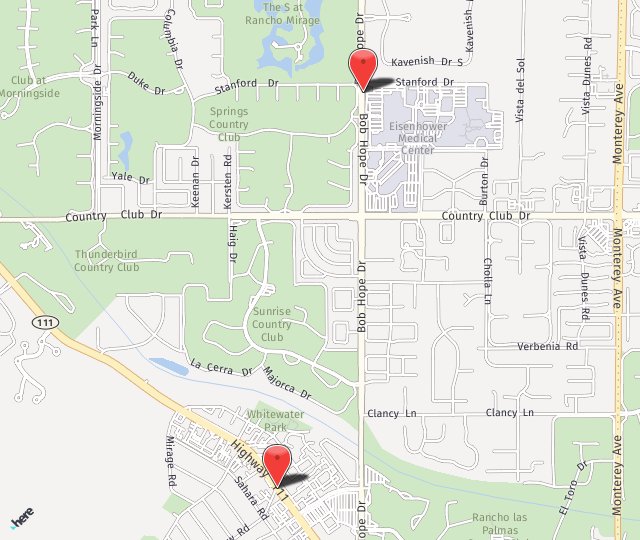Skin Cancer Reconstruction
The skin is the largest organ in our body. It provides protection against heat, cold, light, and infection. The skin is made up of two major layers (epidermis and dermis) as well as various types of cells. The top (or outer) layer of the skin, the epidermis, is composed of three types of cells: flat, scaly cells on the surface called squamous cells; round cells called basal cells; and melanocytes, cells that provide skin its color and protect against skin damage. The inner layer of the skin, the dermis, is the layer that contains the nerves, blood vessels, and sweat glands.
What Is Skin Cancer?
Skin cancer is a disease in which cancerous (malignant) cells are found in the outer layers of your skin. There are several types of cancer that originate in the skin. The most common types are basal cell carcinoma (70 percent of all skin cancers) and squamous cell carcinoma (20 percent). These types are classified as non-melanoma skin cancer. Melanoma (5 percent of all skin cancers) is the third type of skin cancer. It is less common than basal cell or squamous cell cancers, but potentially much more serious. Other types of skin cancer are rare.
Basal cell carcinoma is the most common type of skin cancer. It typically appears as a small raised bump that has a pearly appearance. It is most commonly seen on areas of the skin that have received excessive sun exposure. These cancers may spread to the skin surrounding them, but rarely spread to other parts of the body.
Squamous cell carcinoma is also seen on the areas of the body that have been exposed to excessive sun (nose, lower lip, hands, and forehead). Often this cancer appears as a firm red bump or ulceration of the skin that does not heal. Squamous cell carcinomas can spread to lymph nodes in the area.
Melanoma is a skin cancer (malignancy) that arises from the melanocytes in the skin. Melanocytes are the cells that give color to our skin. These cancers typically arise as pigmented (colored) lesions in the skin with an irregular shape, irregular border, and multiple colors. It is the most harmful of all the skin cancers, because it can spread to lymph nodes or other sites in the body. Fortunately, most melanomas have a very high cure rate when identified and treated early.
What Causes Skin Cancer?
Most skin cancers occur on sun-exposed areas of skin, and there is a lot of scientific evidence to support UV radiation as a causative factor in most types of skin cancer. Family history is also important, particularly in melanoma. The lighter your skin type, the more susceptible you are to UV damage and to skin cancer.
How Is Skin Cancer Diagnosed?
The vast majority of skin cancers can be cured if diagnosed and treated early. Aside from protecting your skin from sun damage, it is important to recognize the early signs of skin cancer.
- Skin sores that do not heal,
- Bumps or nodules in the skin that are enlarging, and
- Changes in existing moles (size, texture, color).
If you notice any of the factors listed above, see your doctor right away. If you have a spot or lump on your skin, your doctor may remove the growth and examine the tissue under the microscope. This is called a biopsy. A biopsy can usually be done in the doctor’s office and usually involves numbing the skin with a local anesthetic. Examination of the biopsy under the microscope will tell the doctor if the skin lesion is a cancer (malignancy).
Am I At Risk For Skin Cancer?
People with any of the factors listed below have a higher risk of developing skin cancer and should be particularly careful about sun exposure.
- Long-term sun exposure
- Fair skin (typically blonde or red hair with freckles)
- Place of residence (increased risk in southern climates)
- Previous personal history of skin cancer
- Family history of skin cancer, particularly melanoma
- Use of indoor tanning devices
- Severe sunburns as a child
How Can I Lower My Risk Of Skin Cancer?
The single most important thing you can do to lower your risk of skin cancer is to avoid direct sun exposure. Sunlight produces ultraviolet (UV) radiation that can directly damage the cells (DNA) of our skin. People who work outdoors are at the highest risk of developing skin cancer. The sun’s rays are the most powerful between 10 am and 2 pm, so be particularly careful during those hours. If you must be out during the day, wear clothing that covers as much of your skin as possible, including a wide-brimmed hat to block the sun from your face, scalp, neck, and ears.
The use of sunscreen can provide protection against UV radiation. When selecting a sunscreen, choose one with a Sun Protection Factor (SPF) of 15 or more. For people who live in the Southern U.S., a SPF of 30 or greater should be used during summer and when prolonged exposure is anticipated. Sunscreen should be applied before exposure and when the skin is dry. If you will be sweating or swimming, most sunscreens need to be reapplied. Sunscreen products do not completely block the damaging rays, but they allow you to be in the sun longer without getting sunburn.
It is also critical to recognize early signs of skin trouble. The best time to do self-examination is after a shower in front of a full-length mirror. Note any moles, birthmarks, and blemishes. Be on the alert for sores that do not heal or new nodules on the skin. Any mole that changes in size, color, or texture should be carefully examined. If you notice anything new or unusual, see your physician right away. If you have a strong family history of skin cancer, particularly melanoma, an annual examination by a physician skilled at diagnosing skin cancer is recommended. Patients with a personal history of skin cancer often see their dermatologist at least twice per year for screening examination. Catching skin cancer early can save your life.
How Is Skin Cancer Treated?
There are varieties of treatments available to treat skin cancer, including surgery, radiation therapy, and chemotherapy. Treatment for skin cancer depends on the type and size of cancer, your age, and your overall health.
Surgery is the most common form of treatment. It generally consists of an office or outpatient procedure to remove the lesion and check edges to make sure all the cancer was removed. For basal cell and squamous cell carcinomas, excision is frequently done by a dermatologist using a specific technique called Mohs surgery, which gives the best chance to include all margins, while still minimizing the size of the defect. Melanoma excision requires wide margins for safe removal.
Sometimes radiation may be used as definitive therapy or after surgery, depending on the situation. For non-melanoma skin cancers, chemotherapy is not needed as primary therapy, and its use after surgery is controversial. For melanomas, chemotherapy and medications that modulate the immune system may be used in more advanced cases.
What is involved in skin defect reconstruction?
Following Mohs skin cancer removal on the head and neck, smaller defects are usually closed primarily by the dermatologist. Larger wounds or skin defects in difficult areas often require closure with skin grafts or local skin flaps. Dr. Quinten VanderWerf specializes in repair of skin defects of the head and neck after Mohs surgery and works closely with many of the local dermatologists. Depending on the type of repair, reconstruction is done under local anesthesia, sedation, or general anesthesia as an outpatient. Hospitalization is rarely required. Dr. VanderWerf will generally see the patient immediately after Mohs surgery is done to assess the size of the defect and make a final determination of the type of repair required.



